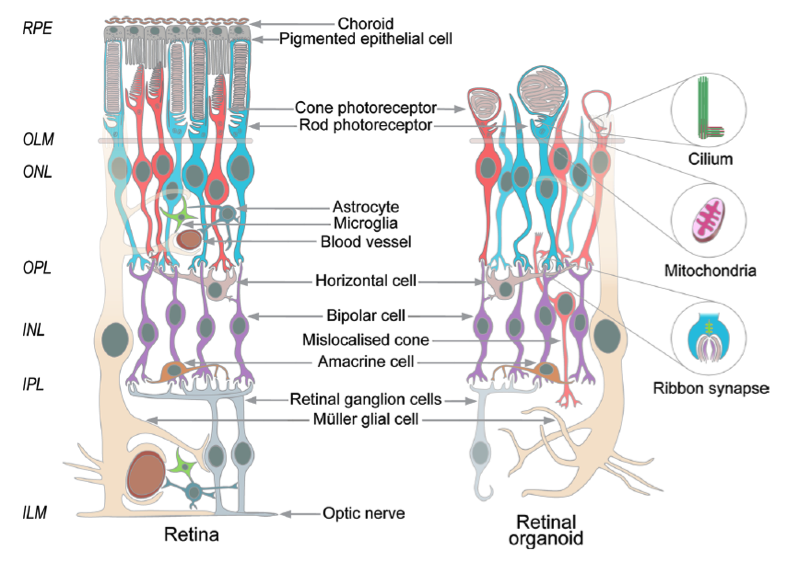Nowadays, most Hereditary Retinal Diseases lack effective treatment. One of the challenges in the development of new therapies is the difficulty to study the functional and physiological effects of the more than 270 genes that are associated with these pathologies. The second challenge is the generation of a reliable model in which to perform a massive screening of potentially therapeutic compounds in the preclinical phase. Some years ago the solution to both challenges arose, that is, the generation of a complete human organ in vitro out of human stem cells: an organoid.
How do we create an organoid?
Currently, researchers are able to take skin cells from a patient, turn them into stem cells and then differentiate them towards different cell types. Thanks to the combination and optimization of protocols, they are also capable of obtaining organized tissue-like structures.
What are retinal organoids?
The human eye is a complex organ, formed by very different cells, each with a highly specialized function, that are organized in a specific structure. Even though retinal organoids are not yet an exact copy of the human eye, the model is close enough that the results obtained in an organoid can be extrapolated to the organ in vivo. Retinal organoids have most of the cell types that can be found in the human retina. Moreover, they maintain a layered structure and are able to respond to light stimuli.


How can we use organoids in the development of new therapies?
The main advantage of organoids is that, as the cells are derived from the patient, they will share their genome. Therefore, they will be a good replica of the genetic and cellular context of said patient. The treatments that obtain good results on an organoid are more likely to work out in a patient than those tested in animal models. In animal models, having a slightly different structure and metabolism than the human may affect their response to the therapy. On the other hand, due to their easier handling and storing, organoids allow for simultaneous screening of multiple assays. This massive testing speeds up preclinical trials and shortens the time for a potential treatment to reach human use.
Bibliography:
